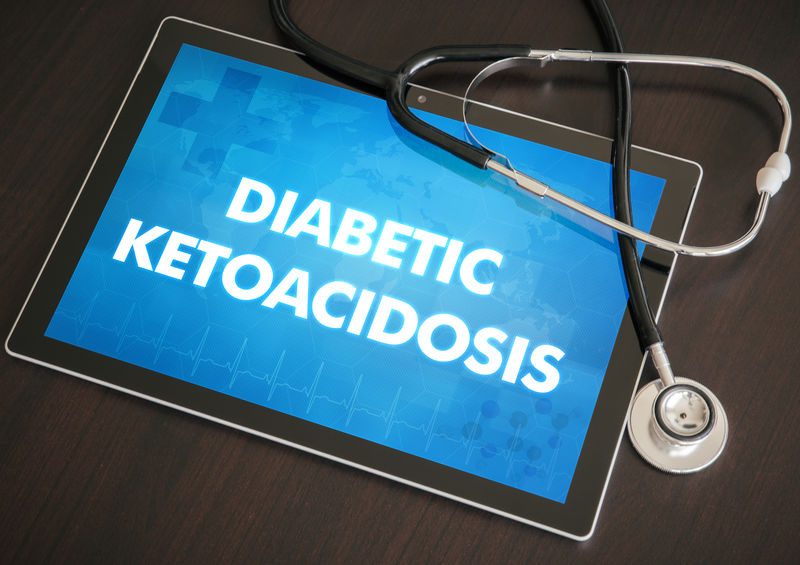
With the ketogenic diet being among popular “weight loss” diets today, learning how the fat-fueled process of ketosis is different from the potentially deadly ketoacidosis may help put certain misunderstandings to rest.
There are health and nutrition professionals who warn against adopting this diet as it may lead to life-threatening ketoacidosis. Others say achieving ketosis is a healthy adaptation that can help burn fat. Clearly, there are some misconceptions revolving around this hot topic.
Is ketosis the same thing as ketoacidosis? Does ketosis lead to ketoacidosis? Let’s start with defining the processes.
What is ketosis?
Ketosis is the state in which the liver produces ketones as an alternative source of energy.
When the body is deprived of glucose, such as in the case of a very-low-carbohydrate (ketogenic) diet, the liver will produce ketones derived from triglycerides (stored fat) as an alternative form of fuel for energy. This is largely mediated by gluconeogenesis and the amount of insulin released into the bloodstream by the pancreas.
What are ketones?
Ketones are a byproduct of the breakdown of triglycerides. Triglycerides are the storage form of fat and the most abundant source of energy in the body. When the body needs energy, such as during exercise or a state of insufficient carbohydrate intake, triglycerides (stored fat) are converted into energy via the process of lipolysis.
Each triglyceride is composed of three fatty acid molecules held together by a glycerol molecule. The process of lipolysis breaks the molecular bonds between the glycerol and fatty acids, thus releasing the fatty acids to be used for energy.
The breakdown of fats for energy produces ketones as a byproduct, which can then be utilized by the nervous system as a partial alternative to glucose. This process helps conserve the body’s supply of glucose if energy intake is limited to the extent that the body must turn to its fat stores for energy.
Can the body operate without glucose?
Short answer, no. The state of ketosis is accompanied by gluconeogenesis, the process by which the body converts non-carbohydrate substrates (protein and fat) into glucose. Certain tissues require glucose as their energy source.
In the absence of carbohydrate in the diet, and if glycogen stores elsewhere in the body have been depleted, the liver will manufacture glucose from protein or fat. Remember during lipolysis when the triglyceride (fat molecule) was separated into three fatty acids and glycerol? Glycerol, as well as certain amino acids, can be converted into glucose.
Role of insulin
Insulin is a storage hormone, responsible for the absorption of glucose into the liver, adipose tissue, and skeletal muscle. When blood glucose levels are high, insulin is released by the beta cells of the pancreas to signal storage. When blood glucose levels are normal or low, the amount of insulin released is greatly decreased.
Individuals with Type I diabetes are unable to produce insulin since the beta cells of their pancreas are damaged or destroyed and therefore must rely on exogenous insulin (insulin injections) to survive.
Although Type II diabetics have functional beta cells to produce insulin, the cells targeted by insulin have become resistant and fail to respond appropriately. This is called insulin resistance. In the early stages of Type II diabetes, the pancreas will upregulate insulin production in order for target cells to uptake glucose. Over the course of time, the beta cells may effectively become “burned out” and the individual may need to rely on insulin injections.
Ketosis, Gluconeogenesis, and Diabetes
The amount of ketone production is regulated by the body’s need for energy in the absence of glucose. If the body is deprived of carbohydrate, gluconeogenesis occurs and a small amount of insulin is utilized to shuttle this glucose into the target cells, with the glucose preferentially going to the cells that cannot utilize a different energy source. The remainder of the body’s energy requirements is met by fatty acid oxidation and ketone production.
In individuals with Type II diabetes who have not burned out their beta cells, this dramatic decrease in glucose equally reduces the requirement for insulin. Gluconeogenesis occurs, supplying only the cells that require glucose, and the amount of insulin produced is sufficient to shuttle the glucose into those cells. The rest of the body utilizes ketones for energy. This regulated state of gluconeogenesis and ketone production can be referred to as nutritional ketosis.
In individuals with Type I diabetes, gluconeogenesis occurs to supply the cells that require glucose, but they must use injected insulin in order to shuttle the glucose into the cells. If there is no insulin, the cells cannot uptake the glucose.
In an environment absent of insulin, glucose will continue to build up in the blood. Because glucose cannot be used for energy in this case, ketone production will increase dramatically to meet energy demands. However, because the amount of glucose in the cells mediates ketone production, the liver will continue to produce ketones thinking the body needs more energy.
This unregulated state of hyperglycemia (highly elevated blood glucose) and highly elevated ketone levels is known as ketoacidosis. The high concentration of ketones and fatty acids in the blood will change the pH of the blood, turning it more acidic, hence acidosis.
Diagnosing Ketoacidosis
Although a fitness professional cannot medically diagnosis ketoacidosis, it is important to recognize the following symptoms should they arise while training the diabetic client. Seek medical attention for your client immediately if he or she exhibits the following symptoms:
- Excessive thirst
- Frequent urination
- Nausea and vomiting
- Abdominal pain
- Weakness or fatigue
- Shortness of breath
- Fruity or acetone breath
- Confusion
Physicians will order blood tests to confirm a diagnosis of ketoacidosis. Here’s what the labs will show:
- Blood pH of ≤ 7.3 (acidosis)
- Blood glucose >250 mg/dl (hyperglycemia)
- Serum bicarbonate level ≤15 mmol/L (low acid buffers)
- Ketone level 12-20 mmol/L (levels 3x-5x higher than nutritional ketosis)
In contrast, lab tests of an individual in nutritional ketosis should show normal results of:
- Blood pH of 7.35-7.45
- Blood glucose of 70-110 mg/dl
- Serum bicarbonate level of 22-28 mmol/L
- Ketone level of 0.5-4 mmol/L
Population at risk of ketoacidosis
Ketoacidosis is a severe metabolic derangement and can only occur in the absence of insulin. Because of this, the population most at risk are individuals with Type I diabetes. Development of ketoacidosis is usually due to a malfunction of insulin equipment, missed insulin administration, or insufficient insulin therapy. According to the CDC, the number of individuals hospitalized for ketoacidosis in 2014 was approximately 189,000. Ketoacidosis in individuals with Type II diabetes is exceedingly rare.
Summary
Ketosis is a natural and healthy adaptation to periods of caloric and/or carbohydrate restriction. It is a survival mechanism that individuals can manipulate to mobilize fat stores. Ketoacidosis is a disease state that cannot occur in healthy individuals who can produce insulin.
While it is outside the scope of practice of trainers to recommend or prescribe a ketogenic diet, it is important that we are able to help our clients understand how the body works and give context to statements about nutrition that may have previously mislead them.
________________________________________________________________
Article References
Principles of Human Physiology. Pearson College Div, 2016.Chiasson, Jean-Louis et al. “Diagnosis and treatment of diabetic ketoacidosis and the hyperglycemic hyperosmolar state”
CMAJ : Canadian Medical Association journal = journal de l’Association medicale canadienne vol. 168,7 (2003): 859-66.Volek, J. S., & Phinney, S. D. (2012). The art and science of low carbohydrate performance.
Berlín: Beyond Obesity LLC.Trends in Diabetic Ketoacidosis Hospitalizations and In-Hospital Mortality — United States, 2000–2014. (2018, March 29). Retrieved from https://www.cdc.gov/mmwr/volumes/67/wr/mm6712a3.htm







